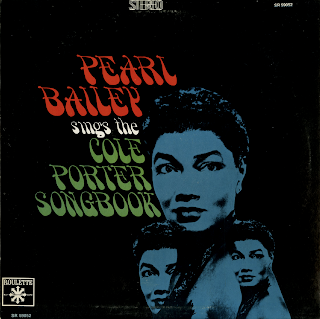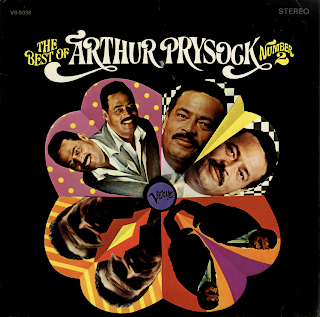Bernie's Tune
Rockin' With Milt
Milt Buckner At The Organ
Capitol Records T642
1955
From the back cover: The first time Milt Buckner played the Hammond organ it was because there did not seem to be anyone else around to play it. How he plays it because there doesn't seem to be any limit to the number of clubs that want to book a Hammond organist's trio.
Buckner, playing organ and some vibes, is now a solid success on the lounge circuit. He tours most of the eastern cities and towns with drummer Sam Woodyard and tenor saxophonist Danny Turner, and he hasn't had trouble getting a booking since he first went out with a trio in August 1952.
That was just after he left Lionel Hampton. "Doug Duke," Hamp's organist, quit the band in 1950, when I was playing piano," Buckner recalls. "Hamp asked me, 'Can you play organ?' I said I couldn't, but I'd try." Buckner tired.
There wasn't any other organist around to help him, so he figured out the keyboard by himself. In a few week he was ready to play in public.
Some of the places the band was playing had house organs, and Buckner began to play occasionally with the band. He learned to play a few tunes, like Hamp's Boogie Boogie, without mastering the foot pedals. Then Hampton began to rent an organ for him on all their important jobs.
Until he learned how to use the pedals, Buckner had a problem. He couldn't get any volume; often the roaring band would drown him out. His first tentative applications of foot to pedal, resulted in a few catastrophes.
"If we were in A flat, well, I'd know where that was," Buckner said, and I'd get my foot on the right pedal and stay on it, and get the volume okay. Then sometimes, when I didn't expect it the band would quiet down suddenly and I'd be left out there by myself – on the wrong chord."
He had even more trouble when the band went into the Orpheum theater in Los Angeles, where there was a five-mannual Wurlitzer.
"On that thing," Milt said, "it would take three to five seconds for the sound to come out after you pressed the key. Can you imagine trying to swing under those conditions? I went in there every day before the first show, and I stayed a long time after the last one, practicing.
Buckner, born in St. Louis, went to live with an uncle in Detroit at the age of 9, after both his parents died. The uncle sent his nephew to study piano.
When he was 13, he had tasted commercial success – a subbing job for the heady sum of $10 – and was too eager to take the many jobs that were open to a pianist who could read music.
He was in high school, and he says he can still remember "when our band used to go out to Caldwell, Mich., to play weekend jobs – Thursdays to Sundays. We used to play a late dance on Sundays, wearing tuxedoes.
"By the time we had played the job, cleaned up, eaten dinner, and driven 100 miles back to Detroit," Buckner recounted, "it would be just about time for me to go to school. The boys would let me off in front of the school, and I'd spend the whole day in school wearing my tuxedo."
He didn't graduate, but by the time he got into the upper grades, he was working full time.
He spent his teens and early 20s playing with two Detroit bands – Don Cox's and Jimmy Rauschelle's. He joined Cox in 1934, left him for Rauschelle in '35, went back to Cox in '37, returned to Rauschelle in '40 and rejoined Cox in '41.
Some time later, Lionel Hampton, who had heard him play several times, asked Buckner to sit in at a rehearsal. When it turned out that the regular pianist's illness was so serious he had to quit the band, Buckner was hired.
He stayed with Hampton seven years and did a great deal of arranging. "I think I wrote about 15 arrangements of Flying Home alone," he says.
When he left the band, it was to form his own group. By now he's developed his trio to the point where he can play virtually any job – a jazz club, commercial lounge, rhythm and blues club, or dance hall.
A good deal of Buckner's popularity may be attributed to his personality. A compact, 5-foot-2 1/2 inch ball of energy, he is a lively figure on any stand. The music fits the personality – it's usually loud, heavily melodic and swinging. Recently, when a patron asked him for Happy Birthday, he responded with such a bright, swinging performance that it delighted even jazz fans in the audience. But Buckner is able to tailor his style of music to the style of the spot he's working... – Bob Fulford (DownBeat)
Lean Baby
Bernie's Tune
Rockin' With Milt
Easy To Love
Blues For Me
Robins Nest
Slaughter On 125the Street
Little Miss Maudlin
Movin' With Mitch
Take The "A" Train




























